-
 Bitcoin
Bitcoin $97,421.3940
-1.59% -
 Ethereum
Ethereum $2,748.5500
-2.70% -
 Tether USDt
Tether USDt $1.0004
-0.01% -
 XRP
XRP $2.3923
-2.77% -
 Solana
Solana $197.4918
-1.72% -
 BNB
BNB $584.8616
0.89% -
 USDC
USDC $1.0000
-0.01% -
 Dogecoin
Dogecoin $0.2537
-3.60% -
 Cardano
Cardano $0.7308
-3.85% -
 TRON
TRON $0.2281
-0.56% -
 Chainlink
Chainlink $19.2593
-2.92% -
 Avalanche
Avalanche $25.3472
-4.80% -
 Stellar
Stellar $0.3303
-2.57% -
 Sui
Sui $3.2286
-6.52% -
 Toncoin
Toncoin $3.7940
-2.31% -
 UNUS SED LEO
UNUS SED LEO $9.8089
-0.03% -
 Hedera
Hedera $0.2361
-4.55% -
 Shiba Inu
Shiba Inu $0.0...01522
-4.33% -
 Hyperliquid
Hyperliquid $23.9851
-6.11% -
 Bitget Token
Bitget Token $6.6413
-1.76% -
 Litecoin
Litecoin $104.5458
-3.32% -
 Polkadot
Polkadot $4.6847
-2.21% -
 Bitcoin Cash
Bitcoin Cash $325.8943
-1.55% -
 Ethena USDe
Ethena USDe $1.0003
-0.01% -
 MANTRA
MANTRA $6.0010
0.98% -
 Uniswap
Uniswap $9.1158
-2.89% -
 Dai
Dai $1.0001
0.00% -
 Ondo
Ondo $1.4173
1.28% -
 Monero
Monero $228.0337
1.12% -
 Pepe
Pepe $0.0...09547
-4.95%
How to operate a perpetual contract?
Perpetual contracts offer traders flexibility and leverage to speculate on future price movements, requiring only a fractional margin deposit, but vigilance is crucial to mitigate risks, such as liquidation and margin calls, due to their volatile nature.
Dec 05, 2024 at 11:33 am

How to Operate a Perpetual Contract
Perpetual contracts are a type of financial derivative that allows traders to speculate on the future price of an underlying asset, such as a cryptocurrency, without having to take physical delivery of the asset. They are similar to futures contracts, but with some key differences. One of the key differences is that perpetual contracts do not have a fixed expiration date, meaning that traders can hold them for as long as they want. This makes them a more flexible trading instrument than futures contracts.
How do perpetual contracts work?
Perpetual contracts are traded on a margin, meaning that traders only need to deposit a small percentage of the total value of the contract in order to open a position. This leverage can amplify both profits and losses, so it is important to use it wisely.
The price of a perpetual contract is determined by the spot price of the underlying asset, plus or minus a funding rate. The funding rate is designed to encourage traders to keep the price of the perpetual contract in line with the spot price.
How to trade perpetual contracts?
To trade perpetual contracts, you will need to open an account with a cryptocurrency exchange that offers this type of trading. Once you have opened an account, you will need to deposit funds into your account and choose the perpetual contract that you want to trade.
When you open a perpetual contract position, you will need to specify the size of your position and the leverage that you want to use. You will also need to decide whether you want to go long or short on the contract.
- Going long means that you are betting that the price of the underlying asset will increase.
- Going short means that you are betting that the price of the underlying asset will decrease.
What are the risks of trading perpetual contracts?
Trading perpetual contracts can be a risky proposition, so it is important to understand the risks involved before you start trading. Some of the risks of trading perpetual contracts include:
- The risk of liquidation. If the price of the underlying asset moves against you, your position may be liquidated, meaning that you will lose your entire investment.
- The risk of margin calls. If your position loses value, you may be required to deposit additional funds into your account in order to maintain your position.
- The risk of volatility. The price of perpetual contracts can be very volatile, so it is important to be aware of the potential for large swings in value.
How to mitigate the risks of trading perpetual contracts?
There are a number of things that you can do to mitigate the risks of trading perpetual contracts, including:
- Using stop-loss orders. A stop-loss order is an order that automatically closes your position if the price of the underlying asset falls below a certain level. This can help to limit your losses in the event of a sudden drop in price.
- Using take-profit orders. A take-profit order is an order that automatically closes your position if the price of the underlying asset rises above a certain level. This can help to protect your profits in the event of a sudden rise in price.
- Managing your risk exposure. It is important to manage your risk exposure by only trading with capital that you can afford to lose. You should also diversify your portfolio by trading a variety of perpetual contracts.
Step 1: Choose a reputable exchange
The first step to trading perpetual contracts is to choose a reputable exchange. There are many different cryptocurrency exchanges out there, so it is important to do your research and choose one that is well-established and has a good reputation.
Some of the things to look for when choosing an exchange include:
- Security: The exchange should have strong security measures in place to protect your funds and personal information.
- Volume: The exchange should have a high volume of trading activity, which will ensure that you can easily get your orders filled.
- Fees: The exchange should have competitive fees.
Step 2: Open an account
Once you have chosen an exchange, you will need to open an account. This typically involves providing your name, email address, and other personal information. You will also need to verify your identity by providing a government-issued ID.
Step 3: Fund your account
Once your account is open, you will need to fund it with cryptocurrency. You can do this by depositing cryptocurrency from another wallet or by purchasing cryptocurrency directly from the exchange.
Step 4: Choose a perpetual contract
Once your account is funded, you can choose a perpetual contract to trade. There are many different perpetual contracts available, so it is important to do your research and choose one that is right for you.
Some of the things to consider when choosing a perpetual contract include:
- The underlying asset: The perpetual contract should be based on an underlying asset that you are familiar with and that you believe has potential for growth.
- The leverage: The leverage that you want to use. Leverage can amplify both profits and losses, so it is important to use it wisely.
- The fees: The fees that the exchange charges for trading the perpetual contract.
Step 5: Open a position
Once you have chosen a perpetual contract, you can open a position. This involves specifying the size of your position and the leverage that you want to use. You will also need to decide whether you want to go long or short on the contract.
Step 6: Manage your position
Once you have opened a position, you need to manage it carefully. This involves monitoring the price of the underlying asset and making adjustments to your position as needed.
Some of the things to consider when managing your position include:
- Using stop-loss orders: A stop-loss order is an order that automatically closes your position if the price of the underlying asset falls below a certain level. This can help to limit your losses in the event of a sudden drop in price.
- Using take-profit orders: A take-profit order is an order that automatically closes your position if the price of the underlying asset rises above a certain level. This can help to protect your profits in the event of a sudden rise in price.
- Adjusting your leverage: You may need to adjust your leverage from time to time as the market conditions change. If the market is volatile, you may want to reduce your leverage to reduce your risk. If the market is stable, you may want to increase your leverage to increase your potential profits.
Step 7: Close your position
When you are ready to close your position, you can do so by placing an order to sell your contract. You will need to specify the size of your order and the price at which you want to sell.
Once your order is filled, your position will be closed and you will receive the proceeds of the sale.
Disclaimer:info@kdj.com
The information provided is not trading advice. kdj.com does not assume any responsibility for any investments made based on the information provided in this article. Cryptocurrencies are highly volatile and it is highly recommended that you invest with caution after thorough research!
If you believe that the content used on this website infringes your copyright, please contact us immediately (info@kdj.com) and we will delete it promptly.
- Meet Hide the Pain Harold, the Hungarian Engineer Who Became an Internet Star and Now Has His Own Memecoin
- 2025-02-07 18:46:04
- FXGuys: The Top PropFi Project Empowering Traders and Investors to Achieve Financial Freedom
- 2025-02-07 18:26:04
- BERA Price Prediction: Will Berachain (BERA) Reach $1 by 2023?
- 2025-02-07 18:26:04
- Google Makes Its ChatGPT Rival Deep Search Available on Android and iOS
- 2025-02-07 18:26:04
- 3 Top New Meme Coins to Buy This Week
- 2025-02-07 18:26:04
- The Best New Meme Coins to Join This Week: Arctic Pablo Coin, Gigachad, Non-Playable Coin, and Simon's Cat
- 2025-02-07 18:26:04
Related knowledge
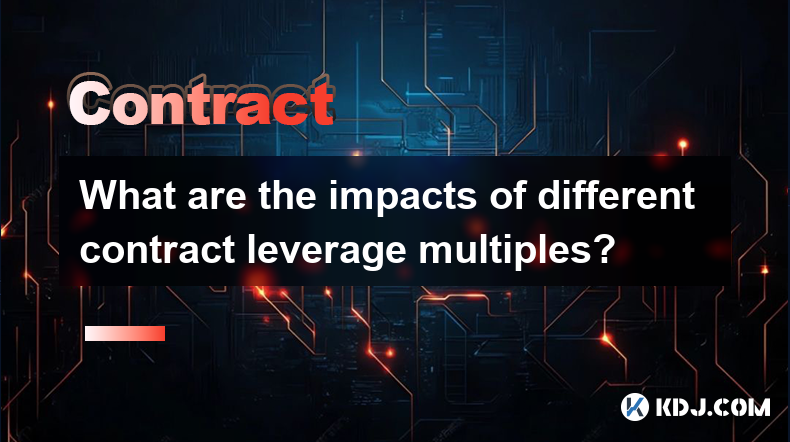
What are the impacts of different contract leverage multiples?
Dec 16,2024 at 12:46pm
Impacts of Different Contract Leverage MultiplesLeverage, a tool leveraged in the financial realm, amplifies trading activities and enhances potential returns while simultaneously magnifying risks. Understanding the implications of varying leverage multiples is paramount for savvy traders. This article delves into the impacts of different contract lever...
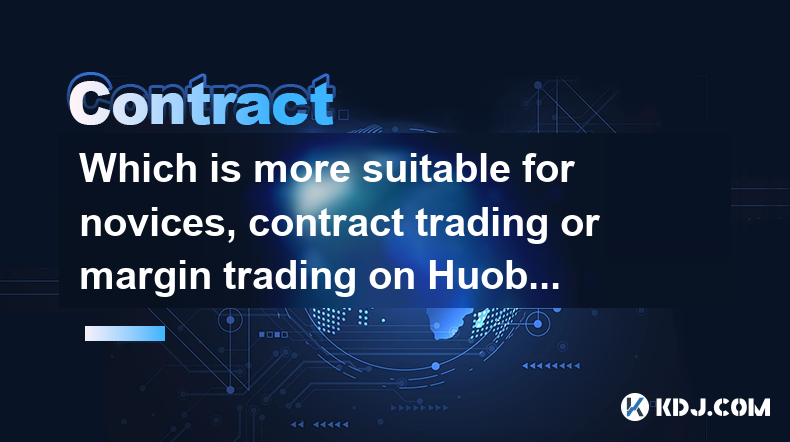
Which is more suitable for novices, contract trading or margin trading on Huobi.com?
Dec 16,2024 at 12:44pm
Which is More Suitable for Novices: Contract Trading or Margin Trading on Huobi.com?As a novice trader venturing into the world of cryptocurrency trading, the choice between contract trading and margin trading on Huobi.com can be a daunting one. Both instruments offer unique advantages and drawbacks, making it crucial to understand their key differences...
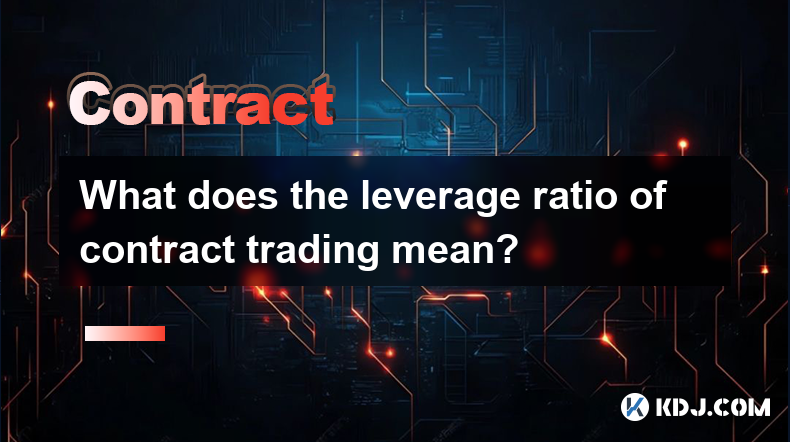
What does the leverage ratio of contract trading mean?
Dec 16,2024 at 12:43pm
What does the leverage ratio of contract trading mean?IntroductionLeverage ratio is a key concept in contract trading, allowing traders to gain exposure to a larger position than their initial capital would allow. This can potentially amplify both profits and losses, making it crucial for traders to understand its implications.Understanding Leverage Rat...

What scams exist in leveraged trading of virtual currency contracts?
Dec 16,2024 at 12:42pm
What Scams Exist in Leveraged Trading of Virtual Currency Contracts?Leveraged trading of virtual currency contracts, also known as margin trading, can be a lucrative way to increase your profits. However, it is important to be aware of the various scams that exist in this market so that you can protect yourself from losing your money.Pump-and-dump scams...
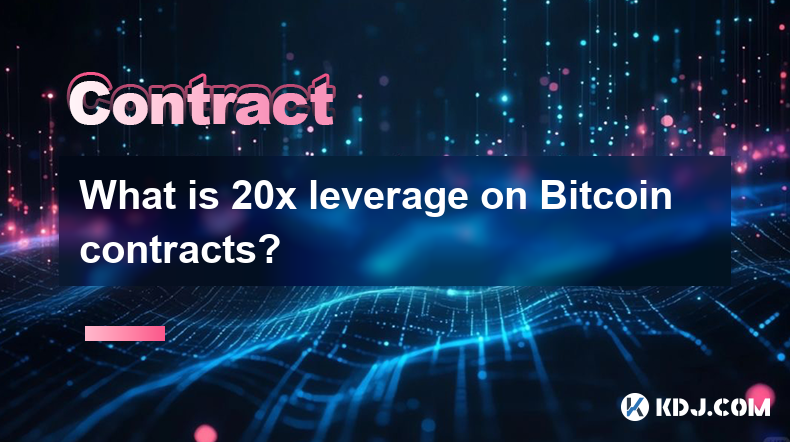
What is 20x leverage on Bitcoin contracts?
Dec 16,2024 at 12:40pm
What is 20x Leverage on Bitcoin Contracts?IntroductionLeverage is a powerful tool in the world of trading that can magnify both profits and losses. However, it's essential to understand the risks involved before using leverage, especially when trading volatile assets like Bitcoin. In this comprehensive guide, we will delve into the concept of 20x levera...
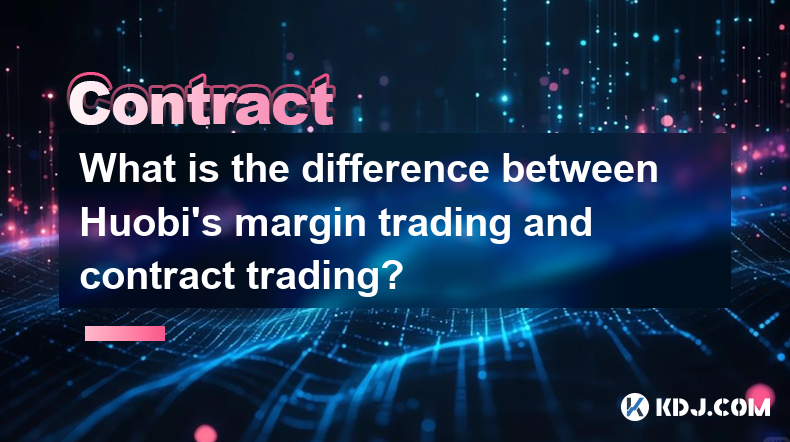
What is the difference between Huobi’s margin trading and contract trading?
Dec 16,2024 at 12:39pm
Understanding the Distinctions between Huobi Margin Trading and Contract TradingIntroductionHuobi, a leading cryptocurrency exchange, offers diverse trading options to cater to traders' varying risk tolerance and investment goals. Among these options are Margin Trading and Contract Trading, each with distinct features and trading mechanisms. This compre...

What are the impacts of different contract leverage multiples?
Dec 16,2024 at 12:46pm
Impacts of Different Contract Leverage MultiplesLeverage, a tool leveraged in the financial realm, amplifies trading activities and enhances potential returns while simultaneously magnifying risks. Understanding the implications of varying leverage multiples is paramount for savvy traders. This article delves into the impacts of different contract lever...

Which is more suitable for novices, contract trading or margin trading on Huobi.com?
Dec 16,2024 at 12:44pm
Which is More Suitable for Novices: Contract Trading or Margin Trading on Huobi.com?As a novice trader venturing into the world of cryptocurrency trading, the choice between contract trading and margin trading on Huobi.com can be a daunting one. Both instruments offer unique advantages and drawbacks, making it crucial to understand their key differences...

What does the leverage ratio of contract trading mean?
Dec 16,2024 at 12:43pm
What does the leverage ratio of contract trading mean?IntroductionLeverage ratio is a key concept in contract trading, allowing traders to gain exposure to a larger position than their initial capital would allow. This can potentially amplify both profits and losses, making it crucial for traders to understand its implications.Understanding Leverage Rat...

What scams exist in leveraged trading of virtual currency contracts?
Dec 16,2024 at 12:42pm
What Scams Exist in Leveraged Trading of Virtual Currency Contracts?Leveraged trading of virtual currency contracts, also known as margin trading, can be a lucrative way to increase your profits. However, it is important to be aware of the various scams that exist in this market so that you can protect yourself from losing your money.Pump-and-dump scams...

What is 20x leverage on Bitcoin contracts?
Dec 16,2024 at 12:40pm
What is 20x Leverage on Bitcoin Contracts?IntroductionLeverage is a powerful tool in the world of trading that can magnify both profits and losses. However, it's essential to understand the risks involved before using leverage, especially when trading volatile assets like Bitcoin. In this comprehensive guide, we will delve into the concept of 20x levera...

What is the difference between Huobi’s margin trading and contract trading?
Dec 16,2024 at 12:39pm
Understanding the Distinctions between Huobi Margin Trading and Contract TradingIntroductionHuobi, a leading cryptocurrency exchange, offers diverse trading options to cater to traders' varying risk tolerance and investment goals. Among these options are Margin Trading and Contract Trading, each with distinct features and trading mechanisms. This compre...
See all articles

























































































